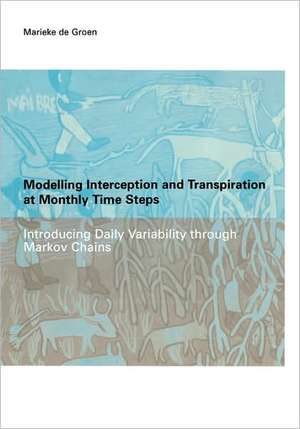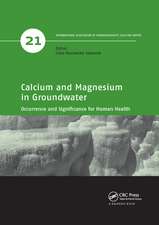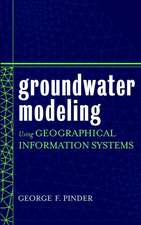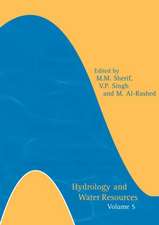Modelling Interception and Transpiration at Monthly Time Steps: IHE Dissertation 31
Autor Maria Margaretha de Groenen Limba Engleză Paperback – iun 2002
Preț: 837.40 lei
Preț vechi: 1021.21 lei
-18% Nou
Puncte Express: 1256
Preț estimativ în valută:
160.25€ • 165.56$ • 133.30£
160.25€ • 165.56$ • 133.30£
Carte tipărită la comandă
Livrare economică 19 martie-02 aprilie
Preluare comenzi: 021 569.72.76
Specificații
ISBN-13: 9789058093783
ISBN-10: 9058093786
Pagini: 128
Dimensiuni: 178 x 254 x 12 mm
Greutate: 0.47 kg
Ediția:1
Editura: CRC Press
Colecția CRC Press
ISBN-10: 9058093786
Pagini: 128
Dimensiuni: 178 x 254 x 12 mm
Greutate: 0.47 kg
Ediția:1
Editura: CRC Press
Colecția CRC Press
Public țintă
ProfessionalCuprins
1 Introduction 2 The Markov model, a stochastic model for daily rainfall 3 Occurrence of rain-days as a Markov process 4 Monthly parameters representing rainfall occurrence 5 Probabilities of daily rainfall amounts 6 Interception 7 Transpiration- the spells approach 8 Monthly model for transpiration 9 Comparison with Thomthwaite-Mather and other monthly models 10 Estimating potential transpiration 11 Spatial interpolation of daily rainfall 12 Conclusions
Notă biografică
Maria Margaretha de Groen, born in Nijmegen, The Netherlands civiel ingenieur, Delft University of Technology.
Descriere
The book presents improved equations for monthly water resources models, in particular for interception and transpiration. Most of the existing monthly models do not make a distinction between interception and transipiration, while this distinction is very important for management purposes. Interception is direct feedback to the atmosphere, important to sustain rainfall. Transpiration is a good indicator for plant growth and biomass production. This distinction also contributes to the estimation of recharge and therewith of runoff.;The derivations are based on the Markov theory for the occurrence of rain-days. The methodology can be used on the basis of an analysis of a few time series of daily data, at a spatial scale of 300km and not necessarily of the same period as the monthly data. Zimbabwe served as the case study, but derived equations can be used worldwide as long as the relationship between the monthly rainfall and the mean number of rain-days can be established.




















